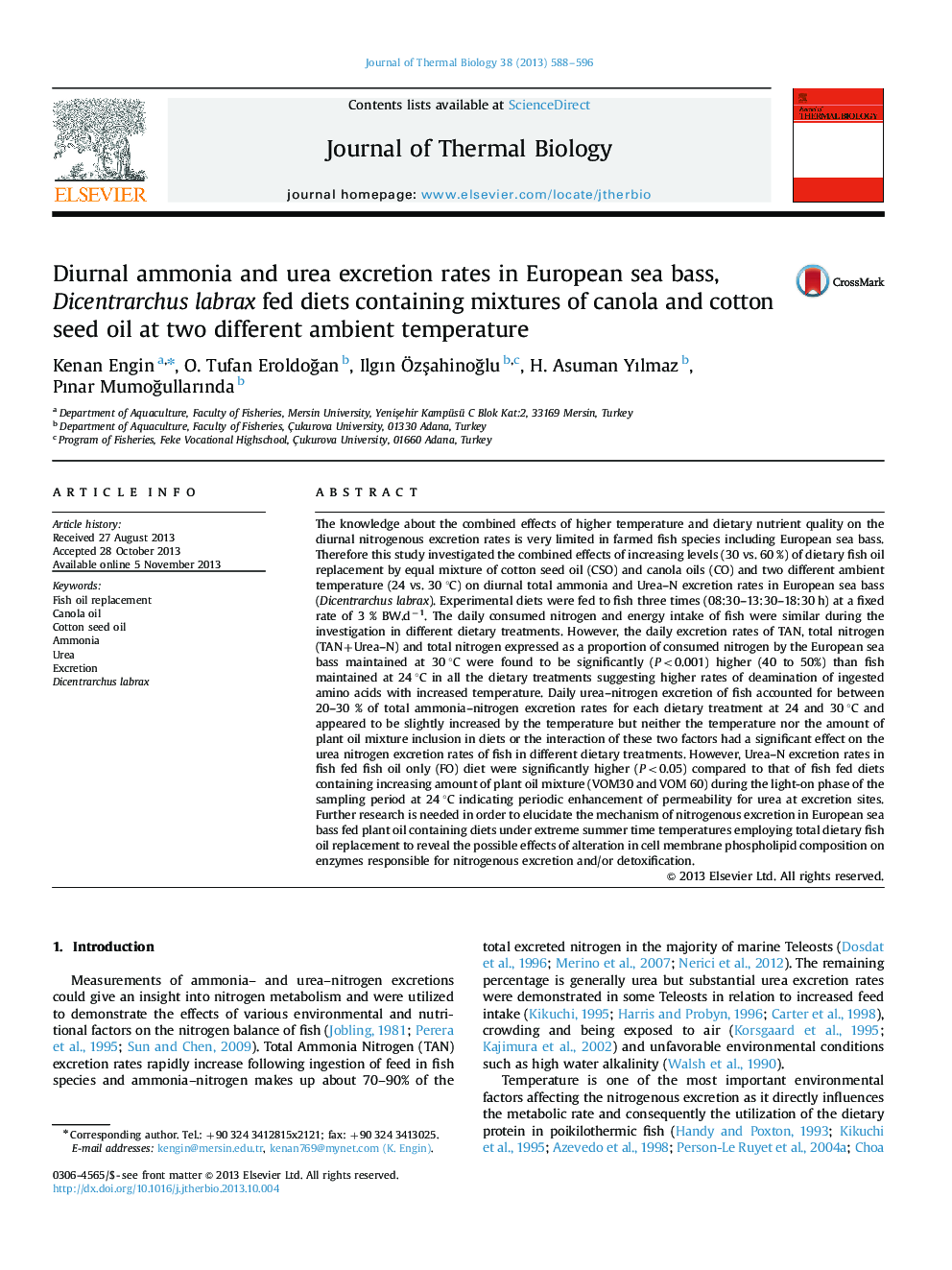| کد مقاله | کد نشریه | سال انتشار | مقاله انگلیسی | نسخه تمام متن |
|---|---|---|---|---|
| 2843044 | 1166068 | 2013 | 9 صفحه PDF | دانلود رایگان |

The knowledge about the combined effects of higher temperature and dietary nutrient quality on the diurnal nitrogenous excretion rates is very limited in farmed fish species including European sea bass. Therefore this study investigated the combined effects of increasing levels (30 vs. 60 %) of dietary fish oil replacement by equal mixture of cotton seed oil (CSO) and canola oils (CO) and two different ambient temperature (24 vs. 30 °C) on diurnal total ammonia and Urea–N excretion rates in European sea bass (Dicentrarchus labrax). Experimental diets were fed to fish three times (08:30–13:30–18:30 h) at a fixed rate of 3 % BW.d−1. The daily consumed nitrogen and energy intake of fish were similar during the investigation in different dietary treatments. However, the daily excretion rates of TAN, total nitrogen (TAN+Urea–N) and total nitrogen expressed as a proportion of consumed nitrogen by the European sea bass maintained at 30 °C were found to be significantly (P<0.001) higher (40 to 50%) than fish maintained at 24 °C in all the dietary treatments suggesting higher rates of deamination of ingested amino acids with increased temperature. Daily urea–nitrogen excretion of fish accounted for between 20–30 % of total ammonia–nitrogen excretion rates for each dietary treatment at 24 and 30 °C and appeared to be slightly increased by the temperature but neither the temperature nor the amount of plant oil mixture inclusion in diets or the interaction of these two factors had a significant effect on the urea nitrogen excretion rates of fish in different dietary treatments. However, Urea–N excretion rates in fish fed fish oil only (FO) diet were significantly higher (P<0.05) compared to that of fish fed diets containing increasing amount of plant oil mixture (VOM30 and VOM 60) during the light-on phase of the sampling period at 24 °C indicating periodic enhancement of permeability for urea at excretion sites. Further research is needed in order to elucidate the mechanism of nitrogenous excretion in European sea bass fed plant oil containing diets under extreme summer time temperatures employing total dietary fish oil replacement to reveal the possible effects of alteration in cell membrane phospholipid composition on enzymes responsible for nitrogenous excretion and/or detoxification.
Journal: Journal of Thermal Biology - Volume 38, Issue 8, December 2013, Pages 588–596